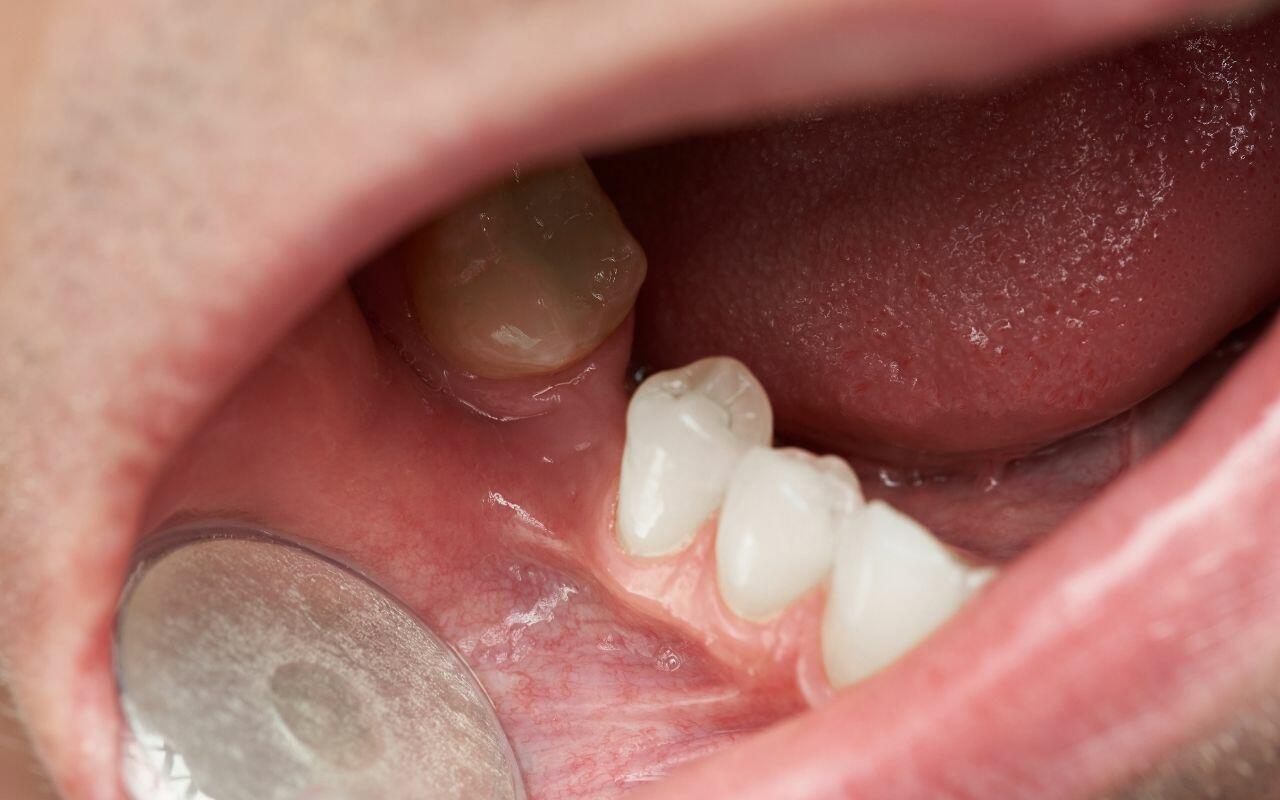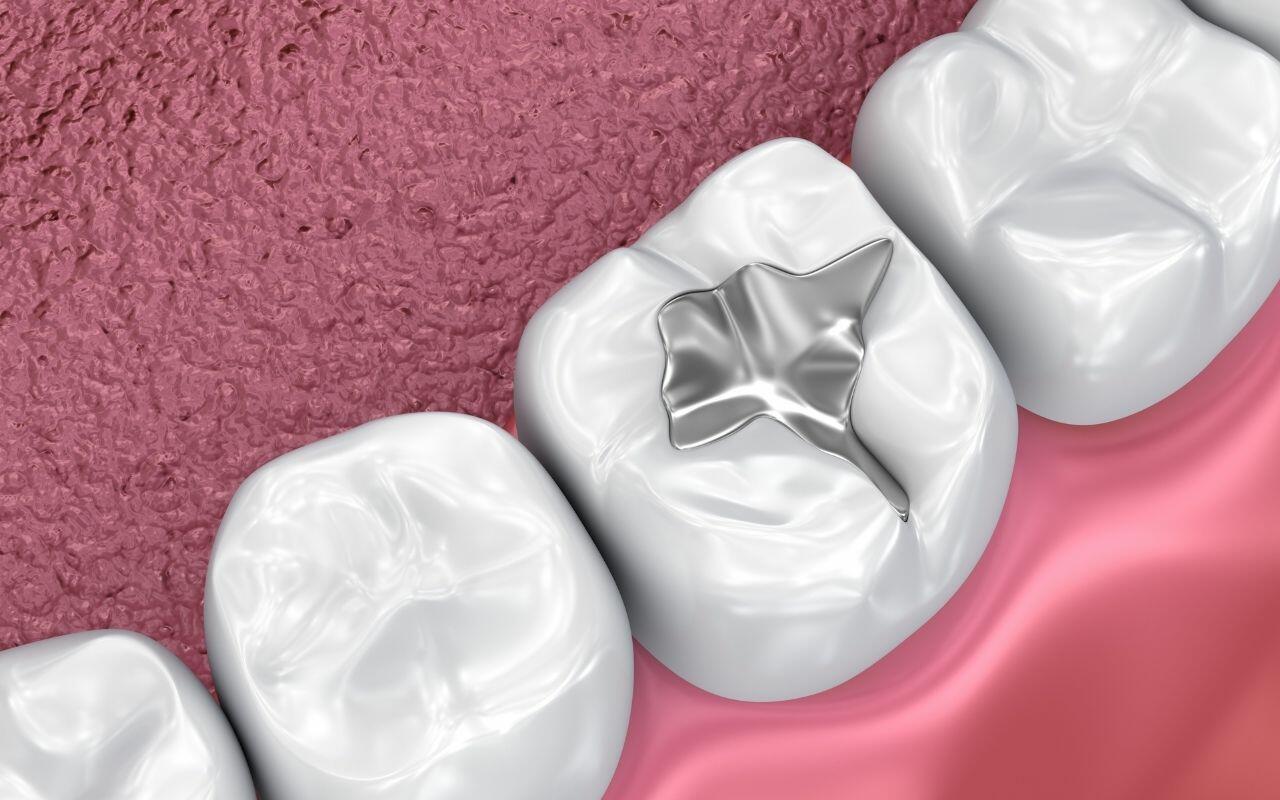Many of our patients have what we call food traps in their mouths. These areas literally act as a food trap where food debris gets stuck. Food traps can exist between the tooth and gums and increase the risk for tooth decay. They can also cause tenderness when food gets caught and isn’t removed with brushing or flossing.
The irritation can lead to gum inflammation and infection. Although food traps are actually quite common, they are not something you should ignore. Here’s everything you need to know about food traps and what can be done about them.
What Causes Food Traps

There are a few things that can cause food traps, including:
- Gaps between your teeth: Ideally your teeth grow side by side with limited space between them. This is nature’s way of helping reduce the risk of food getting caught. However, not everyone has perfect little soldiers lined up in their mouths. If you have gaps or spaces between your teeth, it provides the perfect trap for food.
- Teeth grinding: If you grind your teeth, you increase wear and tear on your teeth which can create food traps.
- Teeth alignment: Improper alignment of the teeth can create all kinds of situations where food can get trapped, including overlaps, nooks, and of course gaps.
- Cavities: If cavities form between your teeth, the hole can create a food trap. This is especially troublesome as it can cause a cavity to form on the neighbouring tooth due to more bacteria and debris.
- Damaged teeth: Teeth that are broken or chipped have little holes and pockets where food can get trapped. Jagged edges and pits also make it easier for food to get caught.
- Receding gums and pockets: If you have receding gums or deep pockets in your gums, you can easily catch food debris in the spaces. Periodontal pockets create openings around the teeth under the gum line. They are a common symptom of gum disease and when left untreated can lead to serious infections.
- Tooth supra-eruption: If your teeth emerge too far above the gumline from the jawbone your root is exposed. This makes this area of the tooth more vulnerable to decay, but can also affect how securely your tooth fits in the bone. This increases the risk of loose teeth. A number of things can contribute to supra-eruption, but one of the worst is having missing teeth. This can lead to issues as the remaining teeth will naturally fall towards the gap left behind by the missing tooth. This increases the risk of multiple food traps.
- Impacted teeth: If you have a tooth that isn’t able to emerge fully from your gums this can lead to food traps. This is common among people whose wisdom teeth don’t erupt.
- Partially erupted teeth: If a tooth is only partially erupted it can create food traps around the gums.
- Poorly shaped restorations: If you have restorations in your mouth that were not shaped or performed properly, it can easily create a food trap. This is very common in cases where the restoration is either over-contoured or has an overhang.
- Damaged crown or filling: Defects or damage to crowns or fillings allow food to get trapped in or around the tooth and gaps.
All of these issues can be spotted early with regular dental checkups. You should also be sure to call your dentist to discuss issues where you find food is constantly getting caught in one particular area.
Can Food Traps Be Treated?

Yes, food traps can be treated. First, be sure you brush and floss properly and regularly to remove all food trapped in your teeth and gums. This will help avoid issues caused by food traps. If you find this isn’t enough, consider investing in a water flosser to help remove food debris. The combination of forced air and water provides enough pressure to remove food debris under the gums or in tight spaces between the teeth.
As mentioned above, speak to your dentist about ongoing issues with food debris. The longer you leave it the more damage that can occur. Your dentist can assess your situation and recommend treatments that will permanently remove the food trap. We use a camera to get a good look at the area so we can determine what damage might exist and provide the best treatment to resolve the issue, such as:
- Dental Fillings: Dental fillings can fill the spaces between two teeth as well as deep grooves to prevent food from getting stuck there. Filling replacements might also be recommended if your current fillings are damaged or loose.
- Dental Crowns: If your tooth has a large filling making it difficult to fill gaps between the teeth, a dental crown can often help protect the tooth. Crowns can also be used in cases where teeth are misshapen or if the tooth is severely damaged or broken.
- Bone or gum grafts: In the case where you have severe periodontitis or bone loss, you might require gum or bone grafts.
- Braces: If you have gaps too large to fill, you will require orthodontic treatment such as braces.
- Dental bonding and dental veneers: Smaller spaces can be closed using bonding to build up the teeth, or dental veneers to help cover the space.
These are the methods most often used to treat more severe food trap issues.
Monitoring

In some cases, your dentist might recommend monitoring the food trap before deciding on a more invasive treatment. Offering tips and tools to help improve your oral hygiene methods is often enough to reduce the risk of food trap issues. In this case, your dentist will note issues at your checkups and recommend further treatments if the hygiene methods aren’t working.
You can also let your dentist know if you are continuously running into issues trying to keep the food trap clean, to discuss any of the above options. Proper dental hygiene and checkups are always the first steps for cavity prevention.
Call today to schedule an appointment at 905-775-5307 or click here to request an appointment.
